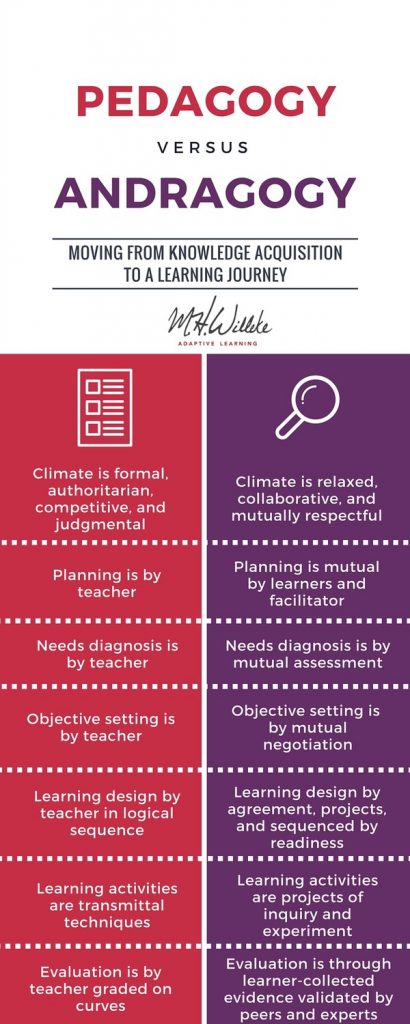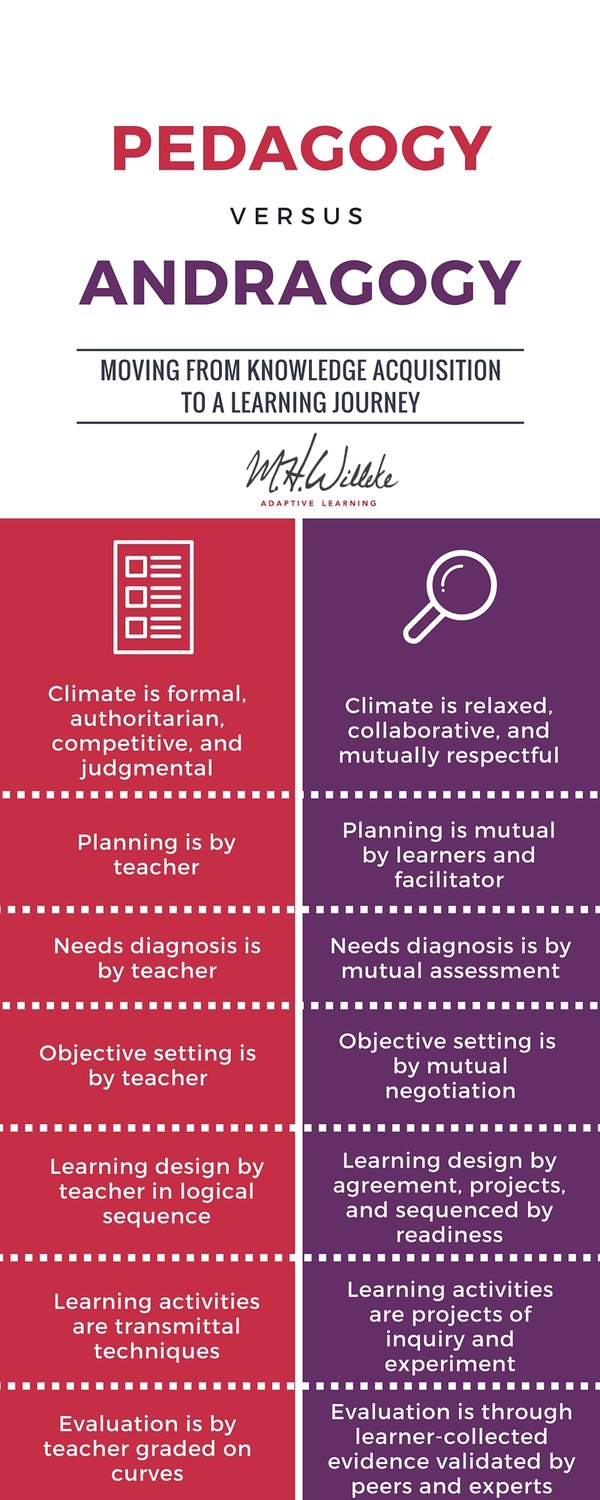The most common differentiation I hear between pedagogy and andragogy is the simple definition … the art and science of teaching children (pedagogy) or teaching adults (andragogy).

Well, that defines the term, thank you … but how are these differences conceptualized? How does it change how I look at designing curriculum, planning for facilitation, or evaluating outcomes?
This infograph is a good representation of why we look at pedagogy and andragogy differently in all three critical roles of 1) instructional designer, 2) facilitator/teacher, and 3) assessor/evaluator.
When you look at the elements that constitute pedagogy and andragogy, it’s no longer about kids versus adults in my mind. It’s more about comparing industrial era learning practices against our current era needs for a lifelong learning journey.
Recently, our Senior Instructional Designer, Dr. Marian Willeke, was involved in the emergence of an agile compass for education, and it is this mindset that helps us align to the androgogical principles in design, facilitator, and assessment roles.
- We need to move from the pedagogical prescriptive behavior to iterative learning that involves visibility so that all stakeholders (including the learners!) have transparency with the learning intentions and outcomes.
- We need to move from the pedagogical approach of content, content, content to a focus on the culture of learning and addressing the ‘why.’ Mike Wesch at Kansas State provides excellent perspectives on the importance of ‘why’ for humans to learn.
- We need to move from the pedagogical drive for evaluation to an environment of visible feedback and reflection. This isn’t a suggestion that evaluation should go out the window. However, taking an assessment, test, or quiz with a feedback of which items were wrong a week later (if you’re lucky) doesn’t inspire the learning values. It is important to partner with the students in a learning journey.
- We need to move from the pedagogical controls we see in in learning environments to a space of trust where students can truly discover rather than be informed. Discovery is motivation for self-direction.
- We need to move from pedagogical competitive nature to a shared, or co-owned, experience that can only happen with authentic collaboration. This is the essence of where our soft skills and social intelligence is derived. Robotic information acquisition will not result in empathetic, critical thinking human behavior.
These five points are the compass points that Agile in Education provides, and aligns so well with the principles of andragogy. So when somebody asks you the difference, it’s not about kids or adults. It’s about knowledge acquisition versus a learning journey.
Written by Dr. Willeke


Comments are closed